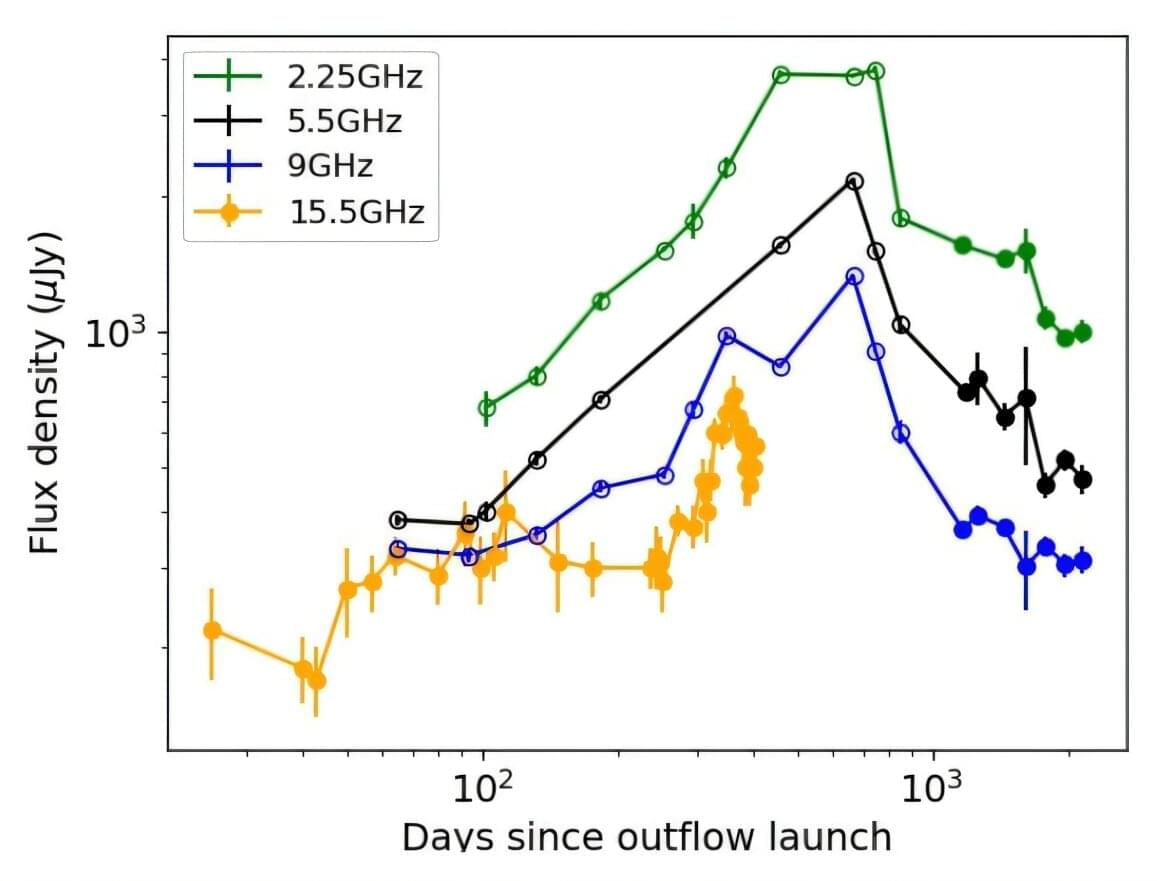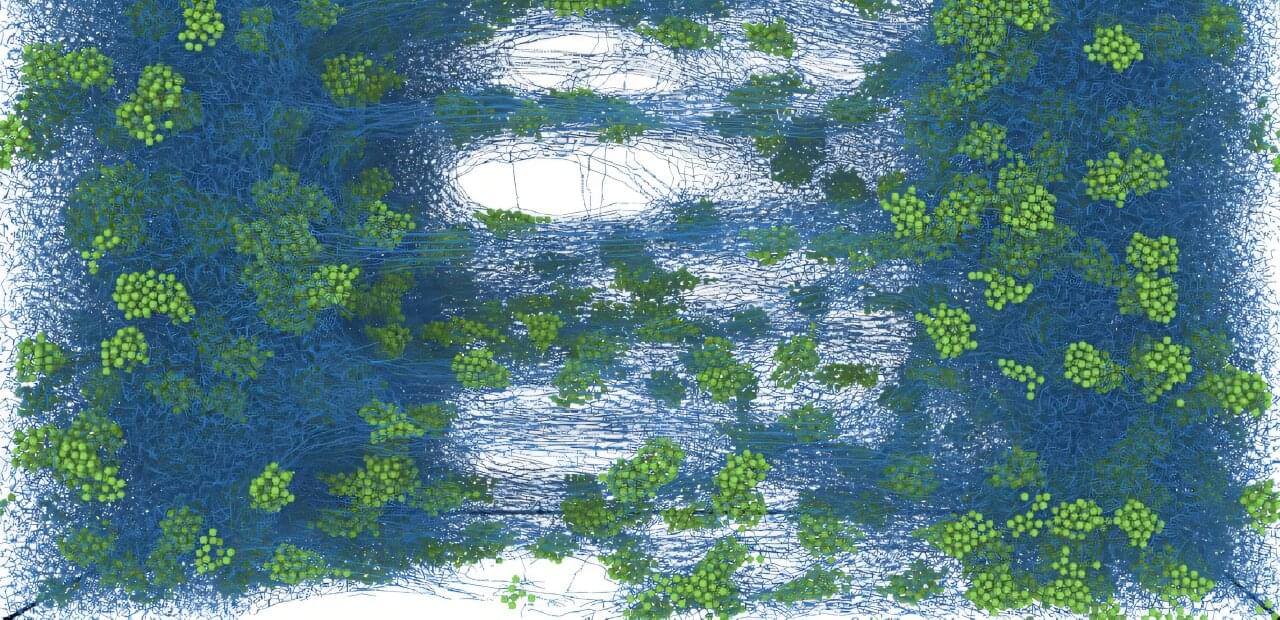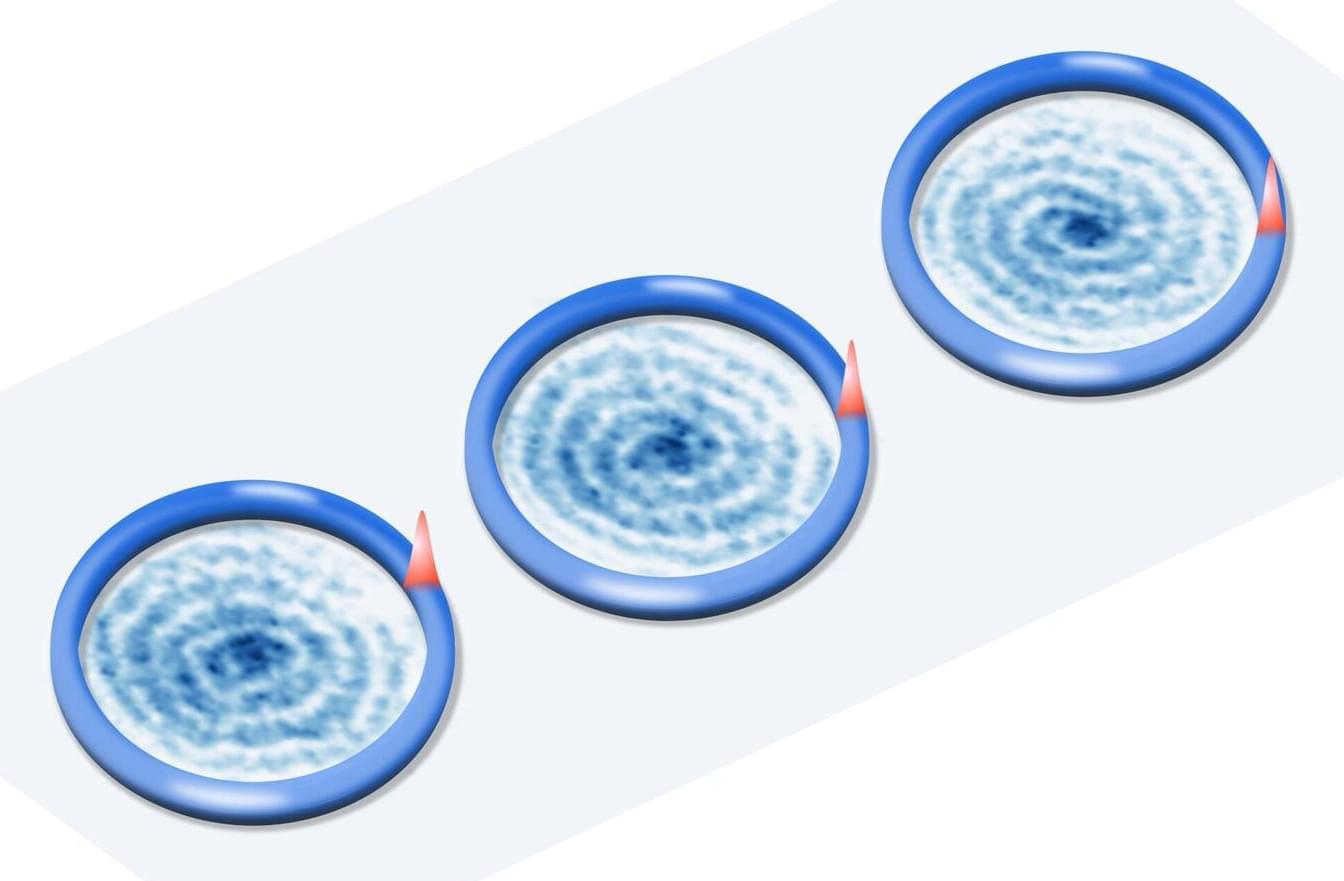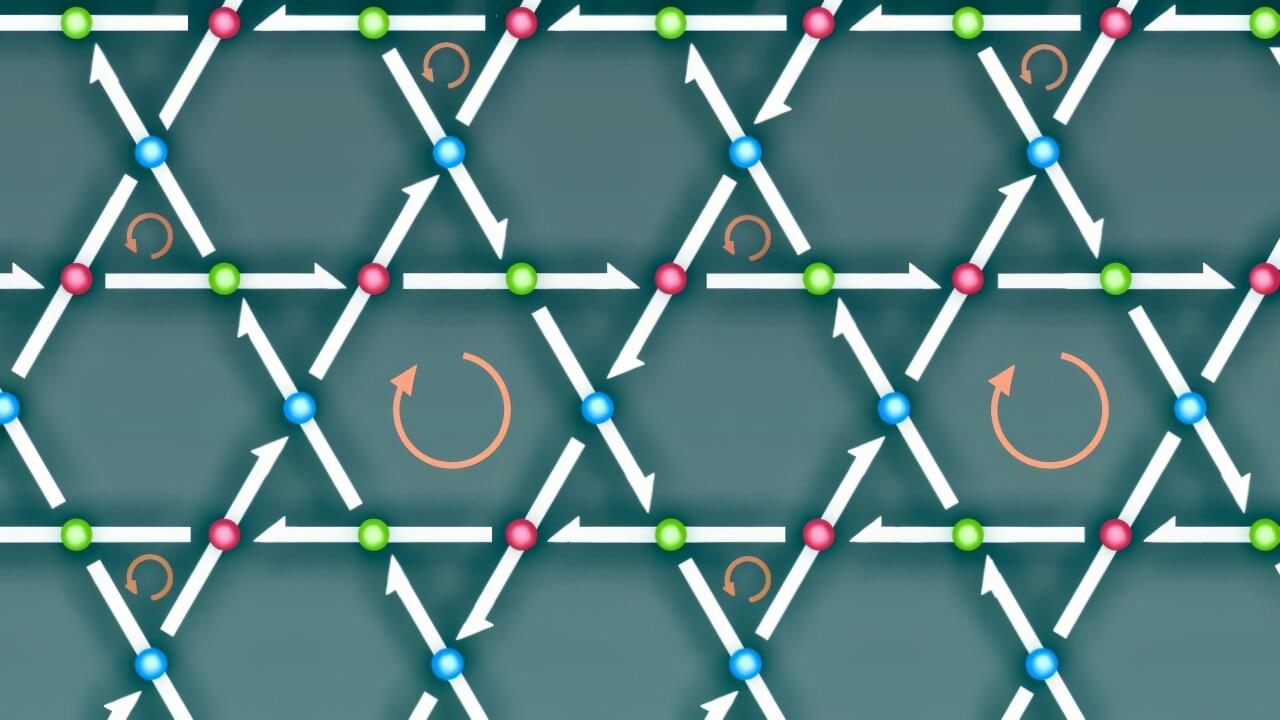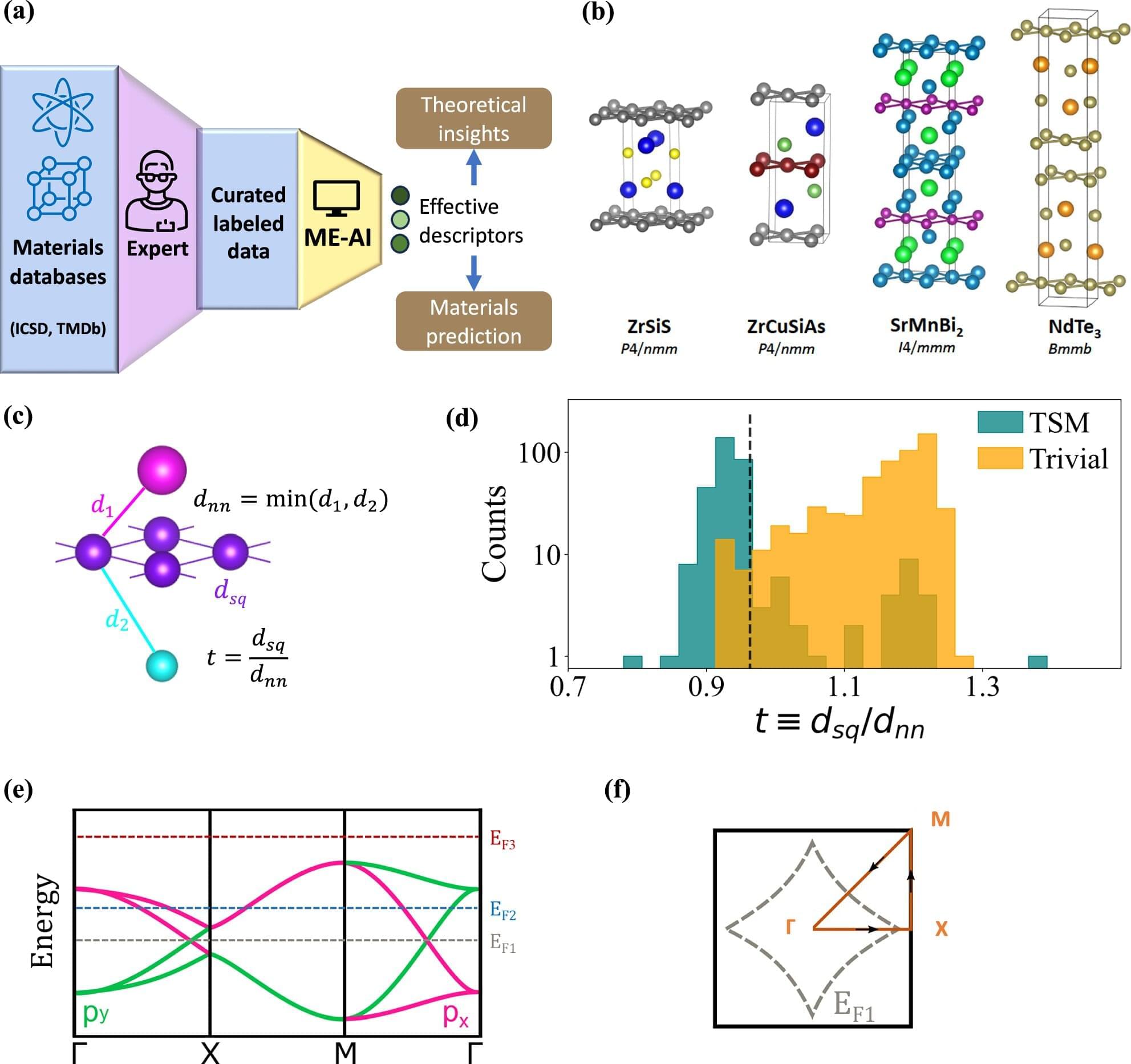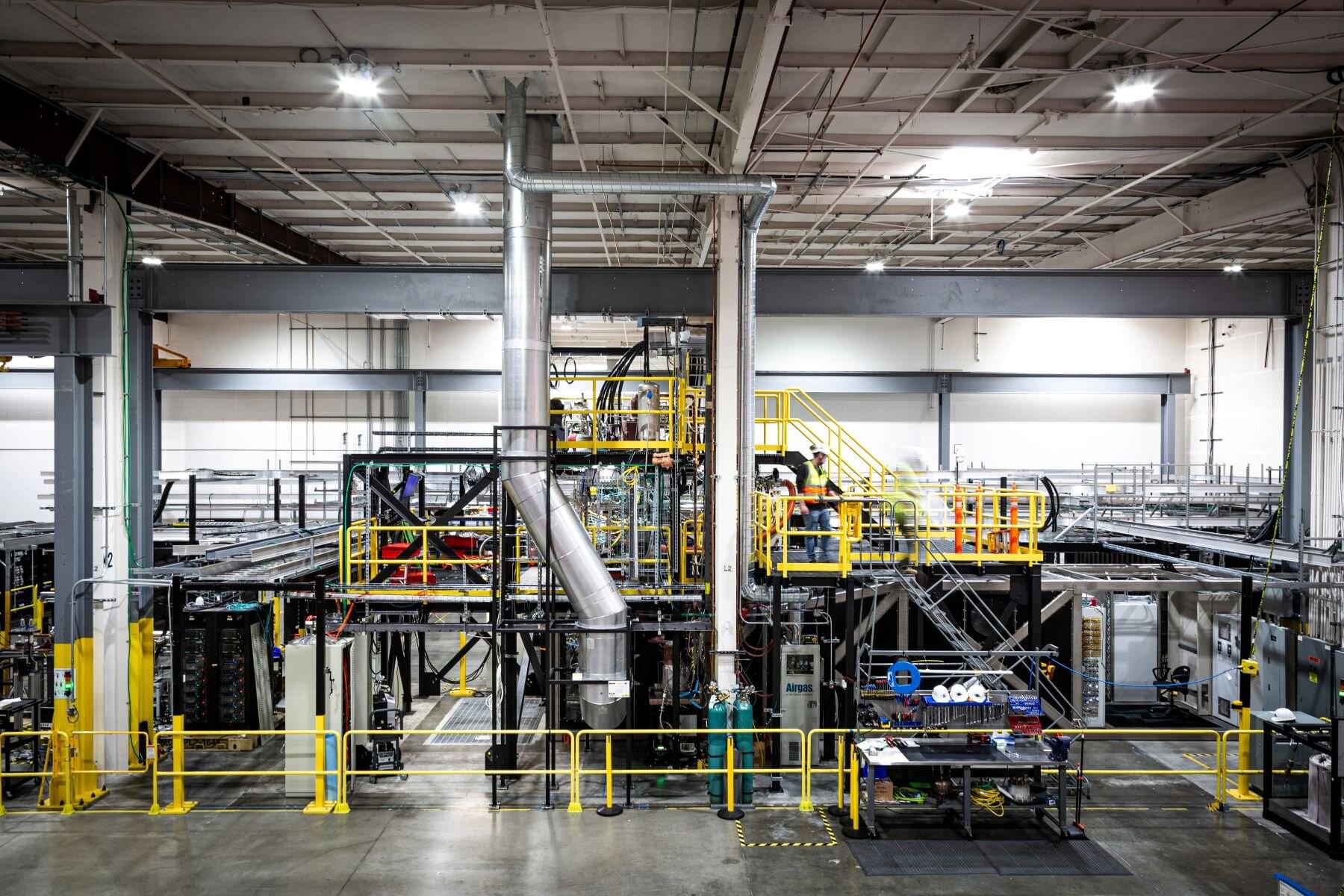Astronomers from Curtin University in Australia and elsewhere have performed radio observations of a tidal disruption event known as AT2019azh. Results of the new study, published September 22 on the arXiv preprint server, provide crucial information regarding the evolution of this event.
Tidal disruption events (TDEs) are phenomena that occur when a star passes close enough to a supermassive black hole (SMBH) and is destroyed by the black hole’s tidal forces. As a result, around half of the stellar debris is unbound from the system, while the rest of the material remains bound, producing a luminous flare as it accretes onto the SMBH.
AT2019azh is a TDE at a redshift of 0.022, detected in 2019 in the galaxy KUG 0180+227. It showcases persistent blue colors, has a high blackbody temperature, and previous observations have reported a lack of spectroscopic features associated with a supernova or an active galactic nucleus (AGN), which confirmed its TDE nature.
